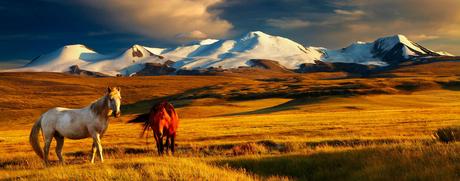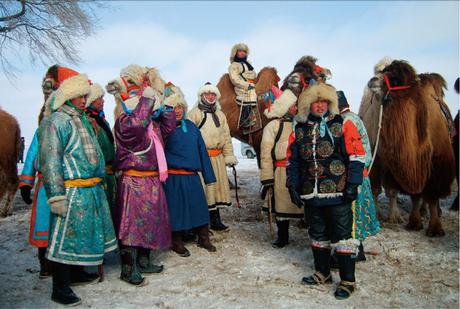The history of Mongolia is dominated by the mythical stature of Genghis Khan who has the head of these hordes of wandering tribes reunified under its banner, conquered At the 13th century the vastest empire which the ground ever knew, cutting through has path of blood and fury of the Pacific Ocean to the heart of Europe. Temudjin, its true name before being proclaimed Chinggis Khan, is quasi has divinity for Mongolian: it brought to them glory, the conquests and has code of conduct and organization. Its image is more than ever present in Mongolia of today although it was presented like has sanguinary barbarian by the official history during Communism. The savage wandering warriors of the steppes durably and painfully marked all the people which knew them closely gold by far, and to their conquering forwarding's are reported since the 5th century before JC in the first Chinese writings.

This vast crucible hardware ground of high plateaus was the many tribes and civilizations, whose majority are little known. The last genetic studies thus confirmed that the Amerindians and the tribes of Siberia and the North of Mongolia cuts common origins. The Mongolian steppes are also the cradle of terrible Huns and to their head Attila the plague of God who sowed panic grass in Christendom, to the fall of the Romain Worsens. The Mongolian Worsens invincible ace for him will last only two centuries time that the warriors are not assimilated by conquered civilizations. The last three centuries history, less known is that of has Chinese supervision until the independence of 1920, then of has Russian supervision, before the democratization and the opening of the country in 1990. "Red Hero" is the capital and largest city of Mongolia. The city is an independent municipality, not part of any province, and its population (in 2008) is just over one million. Located in the north central part of the country, the city lies at an elevation of about 1,310 meters (4,300 ft) in a valley on the Tuul River. It is the cultural, industrial, and financial heart of the country. It is also the center of Mongolia's road network, and connected by rail to the Trans-Siberian Railway and the Chinese railway network. And tourists arrive in Chinggis Khaan International airport of Mongolia. The city was founded in 1639 as an initially nomadic Buddhist monastic centre. In 1778 it settled permanently at its present location, the junction of the Tuul and Selbe rivers. Before that it had changed location twenty-eight times, with each location being chosen ceremonially. In the twentieth century, Ulan Bator grew into a major manufacturing centre.

Mongolia is a landlocked country in , strategically located between China and Russia. At 1,564,116 km2 (603,909 sq mi), Mongolia is the world's 19th-largest country (after Iran). It is significantly larger than the next-largest country, Peru. The geography of Mongolia is varied with the Gobi Desert to the south and with cold and mountainous regions to the north and west. Much of Mongolia consists of steppes and much of the Gobi Desert. The terrain is one of mountains and rolling plateaus, with a high degree of relief. Overall, the land slopes from the high Altai Mountains of the west and the north to plains and depressions in the east and the south. The Khuiten Peak in extreme western Mongolia on the Chinese border is the highest point (4,374 meters).

Mongolian traditional dance Inscribed in 2009 on the List of Intangible Cultural Heritage in Need of Urgent Safeguarding. Our classical traditional dance is biyelgee, is a particular to the people western Mongolia . It is performed to the music of Mongolian national musical instruments, such as the morin khuur (horse headed fiddle) and yochin. Is performed in a ger in circle of people, in other, in other words, in limited small space, before the hearth, so the dancers make partially no use of their rhythmic movements express various aspects of their identities, such as sex, tribe, and ethnic group.

Mongolia's main religion is Buddism, with 90% of the whole population are Buddhists. The rest are Muslims, Shamanist and few Christians. Mongolians; first religion was shamanism, it arose during the clan structure. At that time it was simple, just magic. According to archeological findings, about 100000-40000 years before the people lived on the land of today's Mongolia had this religion. On the ancient earth, every clan had a belief about their origin that they were descended from an animal or a plant, and they called it tutelary genius. The Mongols adored deer or wolf.
* Information on the traditional uses and properties of herbs/ animals/ yoga/ places are provided on this site is for educational use only, and is not intended as medical advice. all image credit goes to their Photographers.
